Kichi-where? For those that don’t know, Kichijoji (吉祥寺, Kichijōji) is a western suburb of Tokyo that is quickly becoming the most popular neighbourhood to live in right now. There’s a lot of good reasons for that including liveability, easy access with the JR Chuo line, and beautiful Inokshira Park, popularity amongst young people but the one big reason to visit as a traveller is their food.
There is so much deliciousness packed into the city that it is one of the best day trips for any foodie from Tokyo. To help with your trip planning, I’ve laid out exactly where you should go in this “Best Kichijoji Food” itinerary, restaurants you should eat at, and also the best street food you have to try. If you enjoy Tokyo street food, this one’s for you because it’s inexpensive, high quality, and a great escape from the hustle and bustle of the core.
More to read
- Kamakura day trip from Tokyo
- How to get around Tokyo
- Best ramen in Tokyo
- Food souvenirs from Japan you need to buy
Where to stay in Japan?
- Looking for a place to stay in Tokyo or the best accommodations in Kyoto, these neighbourhood guides will serve you well. Otherwise, make sure you head to my recommended booking platform which is Booking.com which has the best selection of hotels, guest homes, and hostels.
In This Article
The Kichijoji food tour
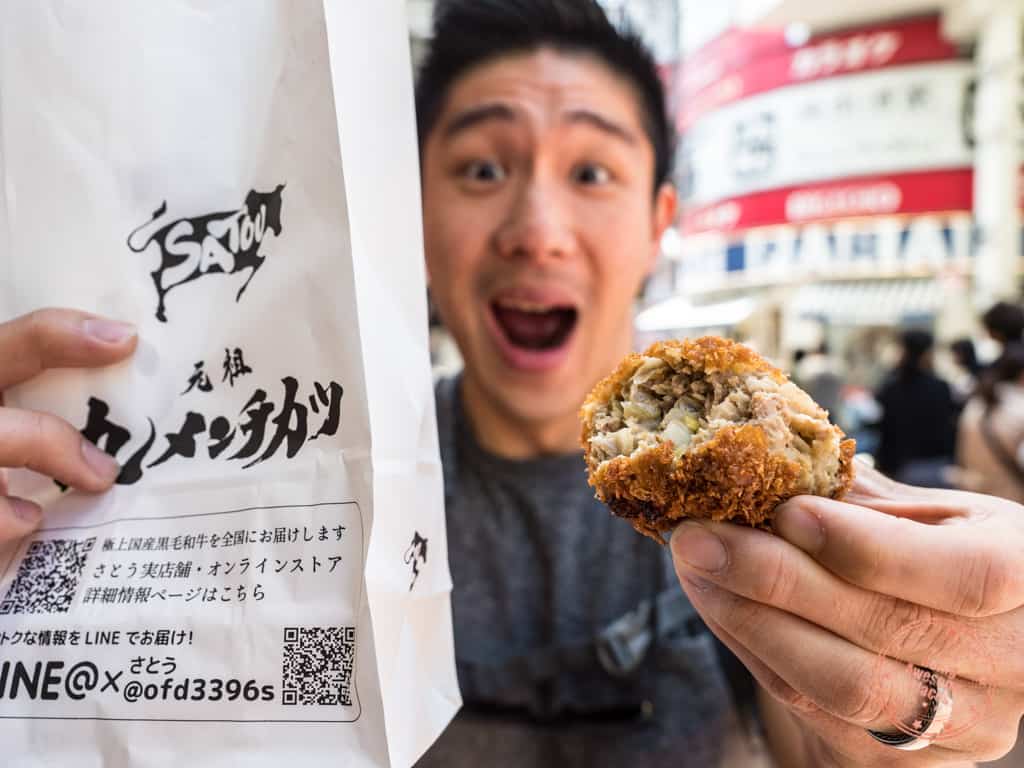
In 2011, Kichijoji was voted as the #1 place people wish they lived in Tokyo. As Hiroshi from Ramen Beast told me during our food tour, it’s become so popular because it’s the go-to hangout spot for students and young professionals and now that I’ve been there myself, I can see why. Street food and its plethora of snacking options and cafes make it a great spot to hangout for locals and visitors alike. It’s all set in a chill, trendy, and laid-back vibe.
This best of Kichijoji food tour gives you step-by-step instructions for the order you should take to visit each food spot once you walk out of the JR train station, and also options for other spots to check out to fill in the time in between as you digest and get ready for more eating.
Best part is that you can enjoy the neighbourhood on a budget, with take-out snacks often costing less than 500 JPY. That’s $5 USD or less!
Best Kichijoji food map
All food spots, sightseeing destinations, and shopping areas worth visiting are marked in this map. This is a great addition to something like the 12 day Japan itinerary.
#1 – Satou Kichijoji

North of Kichijoji JR station and at the corner is a wildly busy shopping arcade intersection is take out windows of Satou. This garners the longest queues that spill out onto the adjacent street and after you finally get to order and sample their savoury snack, you’ll understand why.

Satou Kichijoji is best known for what’s called their Maru Menchi Katsu which essentially translates to minced beef cutlet. These are golden crisped balls of perfection filled with minced beef, chopped onions, salt, and pepper. You wouldn’t think it from just looking at it from the outside but once you bite into the warm and moist filling, you’ll wish you ordered more.
It’s balls-out that good, the best maru menchi katsu you’ll find in Tokyo, and a great first stop along the tour.

There are other things on the menu and we also tried the pork cutlet on a stick but I recommend that you just stick to the minced beef cutlet.
WHAT YOU NEED TO KNOW
Address: 1-chōme-1-8 Kichijōji Honchō, Musashino, Tōkyō-to 180-0004, Japan
Hours: 1oAM – 7PM but the minced beef cutlet specifically is only served starting at 10:30AM.
Price: 220-240 JPY each.
Do they accept credit card?: I’m not 100% sure but I’d recommend paying cash to keep the line moving.
What to order: Minced beef cutlet
Tips:
- If you buy 5 minced beef cutlets, the price is 220 JPY.
- You have to eat these hot and fresh so I wouldn’t recommend buying too many to save for later.
- Proper Japanese etiquette is to not eat food while walking. Since there isn’t a convenient space to eat next to the store and there are signs that tell you not to eat in front of the grocery store, look for an empty spot to chow down.
Japan Trip Planning Essentials and Discounts
If you’re in the middle of booking your trip to Japan, here are the most important places you need to go to book:
- JR Pass – The two most reliable places we always check are JRailPass and JRPass. If you are taking long distance Shinkansen across multiple region, get the full JR Pass. If you’re focusing on one specific area, you only need a JR regional pass.
- Shinkansen – The JR Pass prices have gone up and for many of you, it’ll make more sense to book tickets individually. The secret is that when you buy your Shinkansen tickets through Klook offers special vouchers for Don Quijote and BIC when booking. Their tickets are super easy to redeem as well. Right now, use code SKS10OFF to save $10 USD off.
- Hotels/Ryokans – In Japan, the best website for accommodations, hands down is Agoda. When we’ve compared them against Booking, Agoda consistently came out cheaper.
- Tours – While Viator and GetYourGuide are our go-to’s, Klook and KKDay are much popular in Asia so it’s always worth comparing across all of them to make sure you get the best price.
- Pocket Wifi – While we do love eSIMs, having a pocket wifi is great for sharing data with a large group. The most popular is NinjaWifi which is easy to pick up at the airport. Use code AWESOME15 to save 15% (automatically applied). Alternatives are offered by JRPass and JRailPass but they aren’t as cheap. For a more global solution, consider Solis and PokeFi.
- eSIM – The best one is Airalo. Save money by getting the Japan region eSIM and use referral code WILLIA9500 to get $3 USD credit on your first purchase. From now to Feb 29, the 10GB package is half price as well! Ubigi is another one that we’ve had success with where they uniquely offer 5G coverage. Use code AWESOME10 to save 10% on your first order.
- Car Rental – Big companies like Budget, Avis, and Enterprise operate in Japan but they’re usually the most expensive. The best companies are the local Japanese ones such as Toyota Rentacar, Nippon Rentacar, Orix Rentacar, Nissan Rentacar, and Times Car Rental. To make things easier, use Rentalcars and Klook to compare prices all in one place. Don’t forget, you need an IDP to drive in Japan so get one before you leave your home country.
- Learn Japanese – It helps to know even a bit of the language before you go. Start your learning with Rosetta Stone Japanese.
- Cash or credit – Cash is still very important to have in Japan but when you use credit cards, make sure you’re not getting charged those extra exchange rate fees. The best card right now is the Wise Multi-Currency Card which is actually a debit card where you can convert at favorable rates beforehand. This cuts out any sneaky transaction fees.
- Travel Insurance – Make sure you’re covered in case something happens. Get quotes from Insured Nomads and if you’re from Canada, get quotes from RATESDOTCA.
- Shopping – Discovering Don Quijote is a quintessential part of the Japan experience. The secret for tax-free shopping is that they have a coupon that can help you save 10% off + additional 5% off if you spend ¥10,000 or more.
#2 – Tsukada Suisan


Right around the corner from Satou is a shop that you’ll easily miss if you don’t know what to look for. In English it’s Tsukada Suisan (塚田蒲鉾店) but you won’t find any English characters on the store sign. This is a store that has been open for over 70 years and specializes in oden, and something they call Kichijoji-Age which translates to Kichijoji fry.
With the store front that seems to sell so many different things, train your eyes towards to the right where you’ll see the homemade crispy fish cake delicacies.
The store boasts 4 kinds of Kichijoji-Age, one with shrimp, scallops, octopus, and one with a mix of cheese, spinach, and bacon.
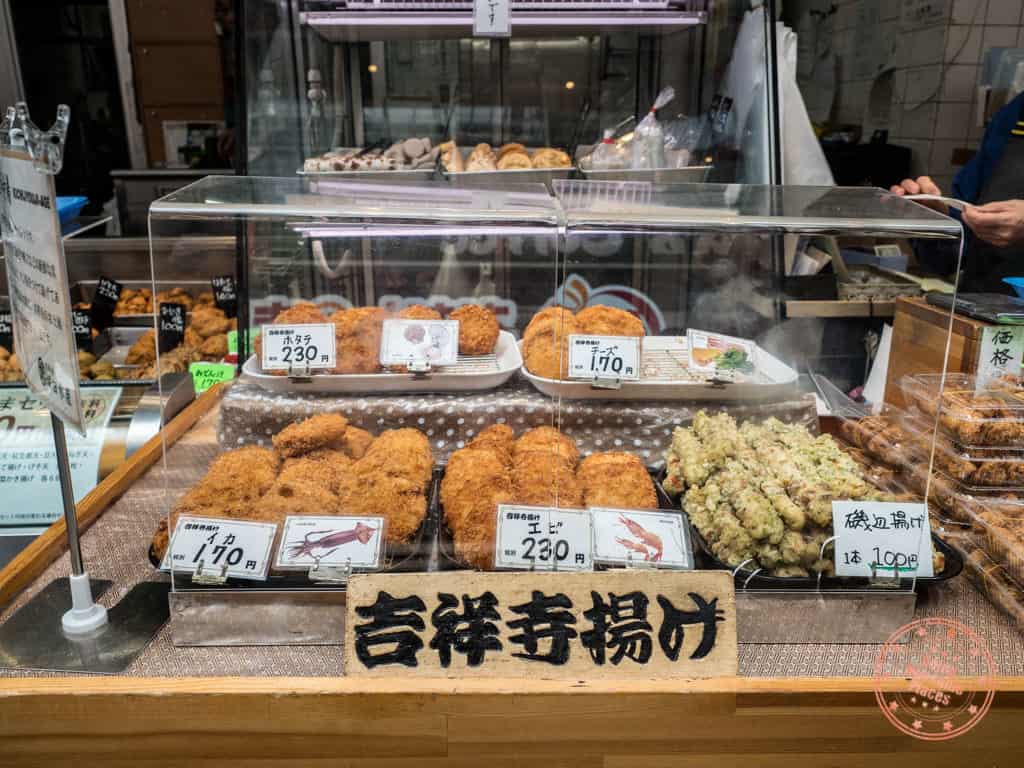
Each one of these is packed with high-quality paste and chunks of fresh ingredients. The outer layer is crisped to perfection and the inside incredible juicy and flavourful. What really impressed me was the fresh seafood you could find inside as most fish cakes are just made out of the paste or surimi.
As far as street food goes, I love how cheap it is and how it isn’t too filling either so you can move onto the next spot in the tour.
WHAT YOU NEED TO KNOW
Address: Japan, 〒180-0004 Tōkyō-to, Musashino, Kichijōji Honchō, 1-chōme−1
Hours: 9:30AM – 7:30PM (Closed January 1-3).
Price: 130-270 JPY each.
Do they accept credit card?: No.
What to order: Any Kichijoji-age.
#3 – Taigashi Hompo Amane
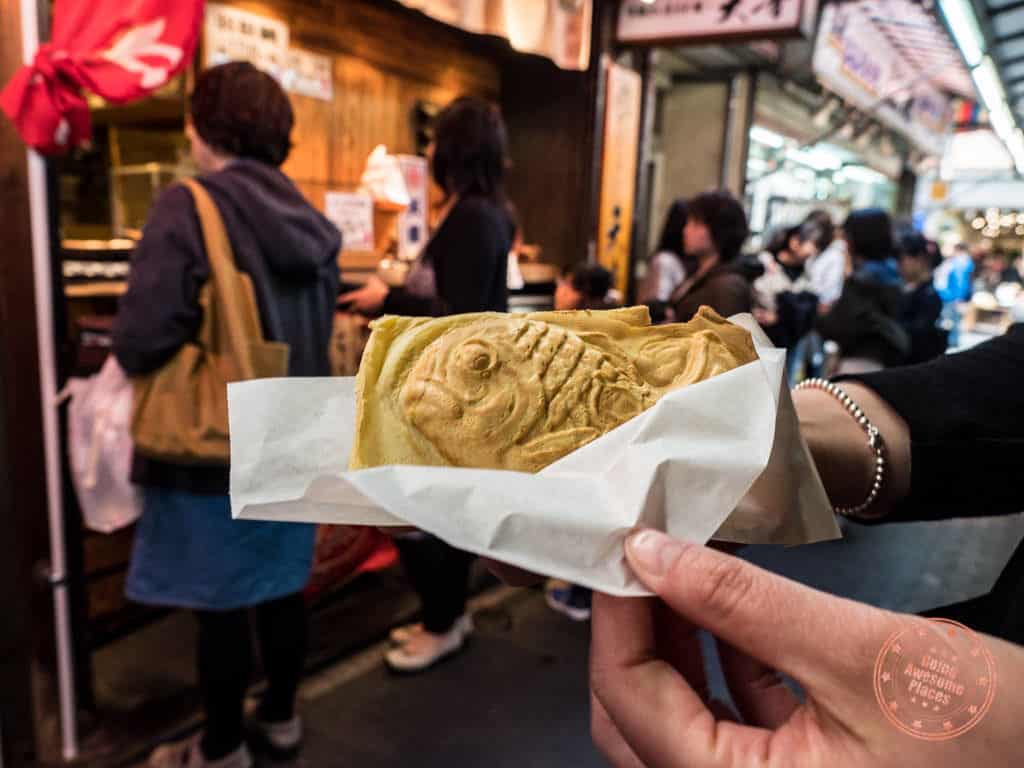
To balance the savoury, we head to an extremely popular sweets shop in an area of Kichijoji known as Harmonica Yokocho. In an extremely narrow alleyway of a maze-like market, you’ll find Taigashi Hompo Amane (有職たい菓子本舗 天音) or just Amane for short.
First a little about Harmonica Yokocho. What used to be a flea market post-war, it was revitalized in the 90’s and soon became a hot spot for nightlife and modern bars. Ducking into the alley feels like you’re walking into a completely different area where wide and tall shopping arcades shrink down to shoulder-width alleys, trendy clothing stores, hidden restaurants with lines spilling out, and lively bars.

Now Amane has that Mom and Pop feel with relics of taiyaki mold on display, weather-worn wood panels, and spartan kitchen in the back.
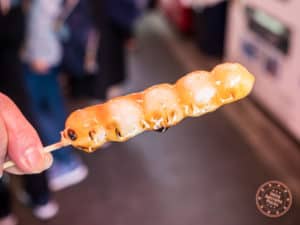
Stepping into line, there’s two things you need to order. 1) dango if you enjoy it (mochi balls on a skewer and drizzled with a soy glaze) and 2) taiyaki.
Personally, I am not a big fan of dango and I’ve come to learn that it’s not because of the shops I get it from but it’s the consistency of the mochi which I find not bouncy enough and the salty-play of the soy confuses the heck out of me.
The taiyaki on the other hand is superb here as it’s made in the traditional way. Unlike other places that have giant molds that can make 4 or 5 at a time, each fish is made with it’s own mould over the fire and when it comes out, you get the whole rectangle as opposed to a perfectly trimmed fish.
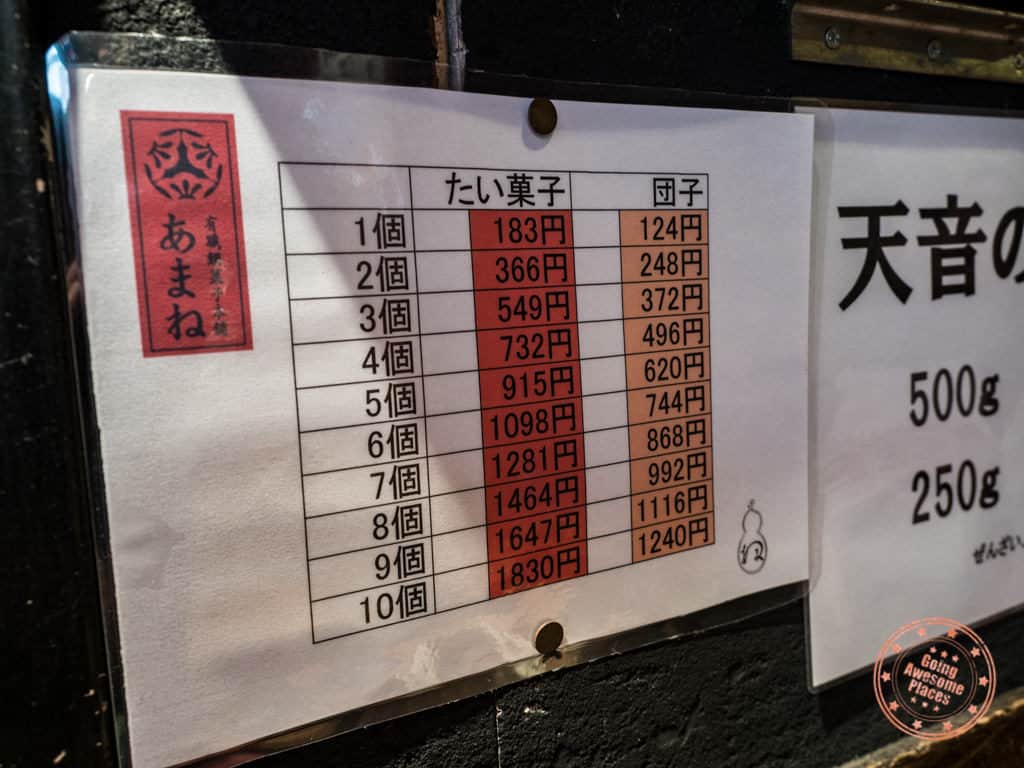
Depending on your tastes though, you might find the batter to be a little more plain than usual but the sweetness of the red bean from Hokkaido, large chunky bean consistency, light sweetness of the brown sugar, and freshness is what really makes their taiyaki shine.
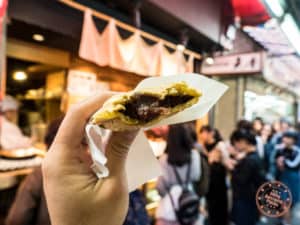
Piping hot is the only way to have it – just try not to burn your tongue while doing it.
Fun fact: The molds used here are made by the same craftsman that made the stand for the Olympic flame in Tokyo in 1964.
WHAT YOU NEED TO KNOW
Address: 1-chōme-1-12 Kichijōji Honchō, Musashino, Tōkyō-to 180-0004, Japan
Hours: 11AM – out of stock
Price: 124-183 JPY
Do they accept credit card?: No.
What to order: Red bean taiyaki, and dango
Tips:
- The store has a sign for 170 JPY for taiyaki but it’s actually 183 JPY after tax.
Rosetta Stone Japanese is an easy-to-use app to learn Japanese on the go and is focused on everyday language as opposed to grammar and rules.
#4 – Ibuki Udon

Now that you’re filled upon sweets, it’s time to dip back into a savoury bowl of udon. Under the train tracks is a this standing-only udon hotspot in Kichijoji. Popular amongst locals, this is the spot to have quality udon noodles. Expect to see a line forming outside the shop doors when you come here.
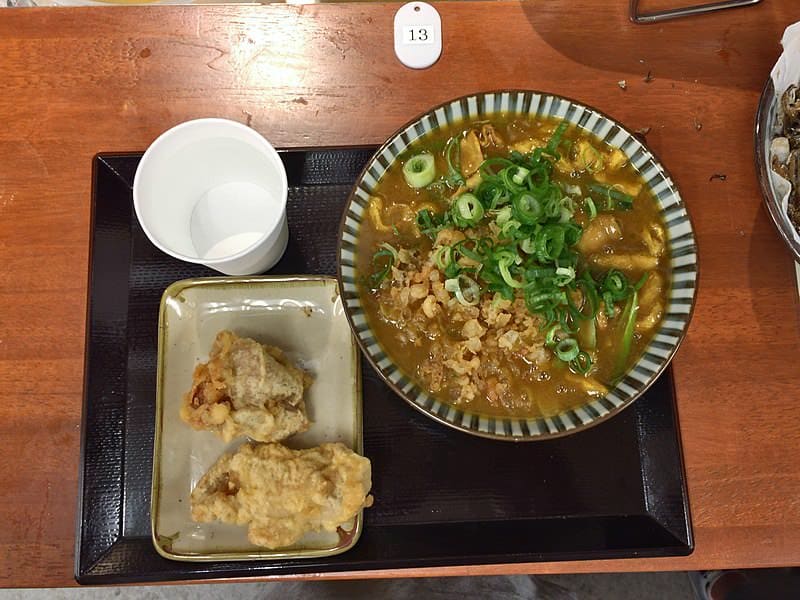
If you decide to head inside to eat, you’ll have plenty of options including this curry udon that you see above paired with a crispy chicken tempura. Space is tight inside but the service is quick and as you’ll see with everyone around you, it’s very much a slurp-and-go kind of eatery.
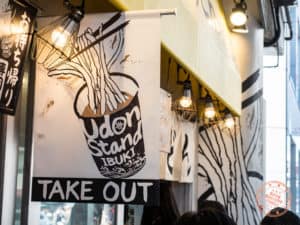
Alternatively you can use the take-out window. Instead of waiting in line, you can order udon in a styrofoam container to eat elsewhere. Inokshira Park is the perfect place to slurp these for later so I recommend that you pick up cold noodles so they don’t continue cooking in the hot broth if you need to walk somewhere else to eat them.
When you get to the take-out stand, you’ll find that the menu is all in Japanese so you might need to pull out the Google Translate app to get you sorted. Or there’s always Japanese Rosetta Stone ahead of time ;)
WHAT YOU NEED TO KNOW
Address: 5-chōme-5-16 Tenjinbashi, Kita-ku, Osaka, 530-0041, Japan
Hours: 11AM-10PM.
Price: 300-550 JPY each.
Do they accept credit card?: No.
What to order: Any cold udon.
Tips:
- Buy the cold udon noodles if you’re doing a take away.
- Standing only restaurant so not that great for large groups or those wanting to sit down while eating.
- If eating in, there’s a machine to order similar to ramen restaurants. Luckily the touch screen can switch to English and there are photos.
#5 – Crepe House Circus
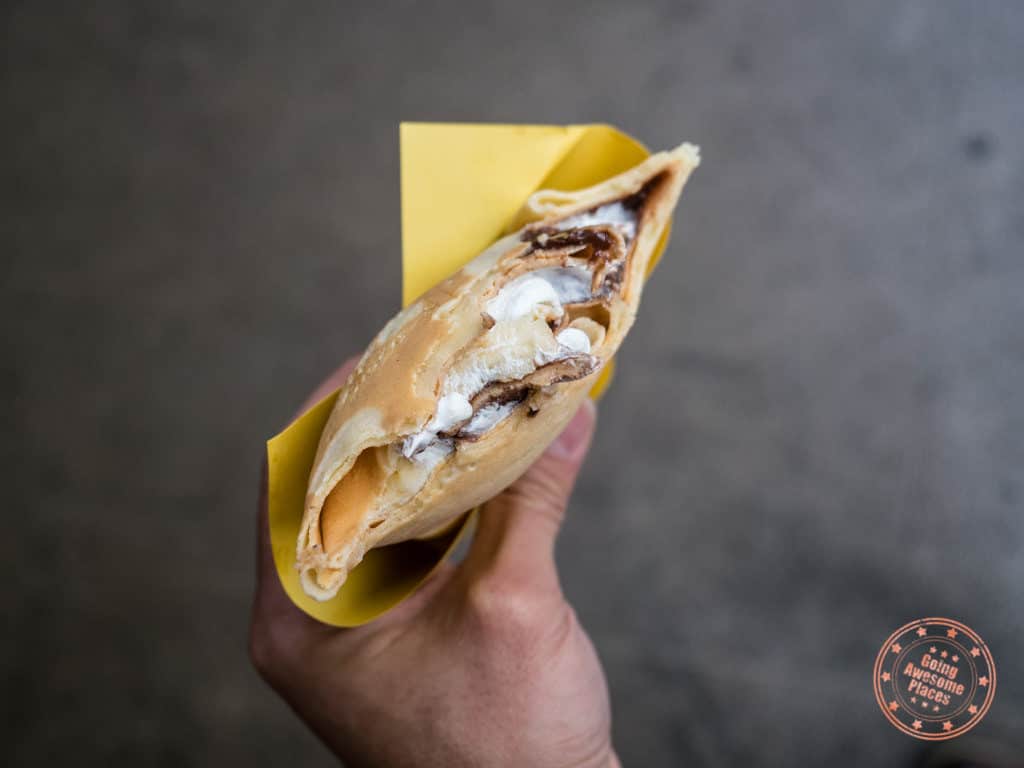
This unassuming shop down a side alley of one of the main shopping arcades of Kichijoji is a neighbourhood classic that you just can’t miss.
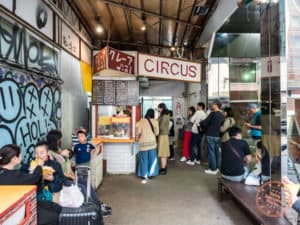
The story is a heart-warming one. The couple behind Crepe House Circus started in France and learned about French crepes. When they came back to Japan, they wanted to bring the authentic taste of France back home.
40 years later, they’re still the most delicious sweet and savoury crepes and the long line ups prove just how popular they continue to be because they make each crepe fresh one at a time and to order.

The must-order item is the whipped cream chocolate banana crepe. With a giant dollop of chocolate spread, a huge triangle of whipped cream, freshly sliced bananas, this has got to be the best bang for buck in town when you consider the size of it, the cost (440 JPY), and how satisfying it is down to the very last bite.

Those that are looking for something a little savoury to perhaps fill in as lunch is the ham and lettuce crepe which is topped with mayonnaise and black pepper balanced with the soft crepe and crunchy lettuce.
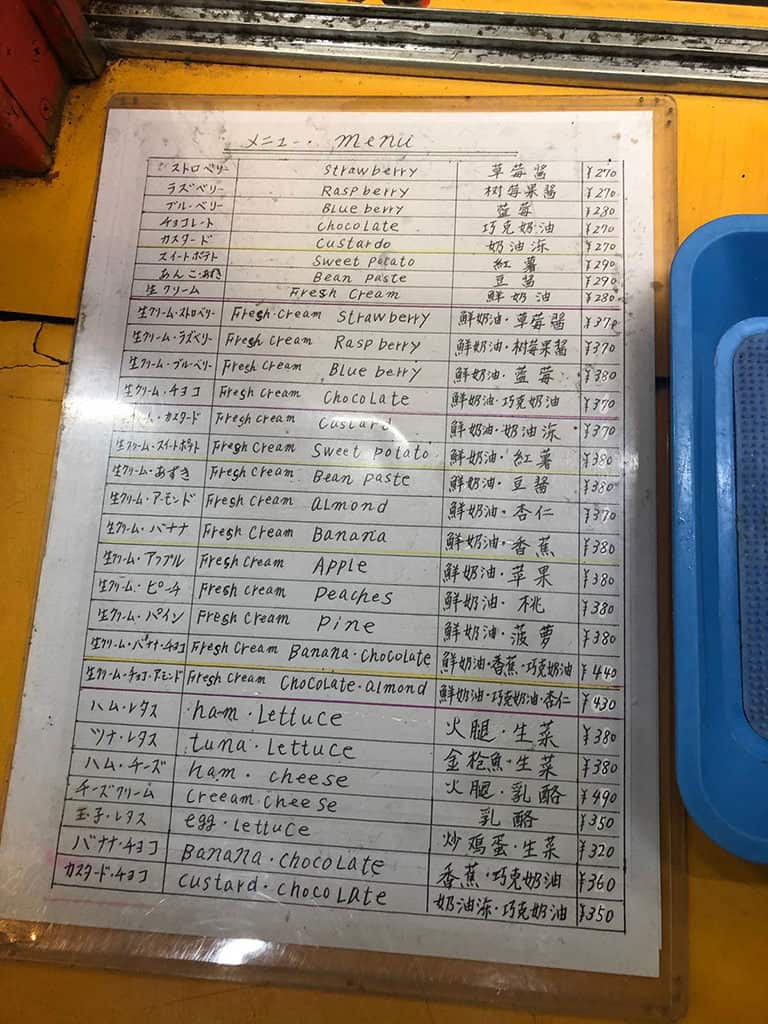
At first we were worried that we wouldn’t know how to order but luckily at the counter, there’s a fully translated English menu so this should help you figure out what to get if you haven’t been convinced by the top classics.
WHAT YOU NEED TO KNOW
Address: Japan, 〒180-0004 Tōkyō-to, Musashino, Kichijōji Honchō, 1-chōme−12−13
Hours: 1:30PM – 8PM. Closed on Tuesdays.
Price: 270-440 JPY each.
Do they accept credit card?: No.
What to order: Fresh cream, banana, and chocolate crepe.
Tips:
- The crepes are big enough for two if you’re not looking to have it as a full meal.
- One thing to note is that the plain crepes with say strawberry is just jam. If you’re looking for fresh strawberries, you have to get the crepe that has strawberry and cream.
#6 – Wood Berry’s
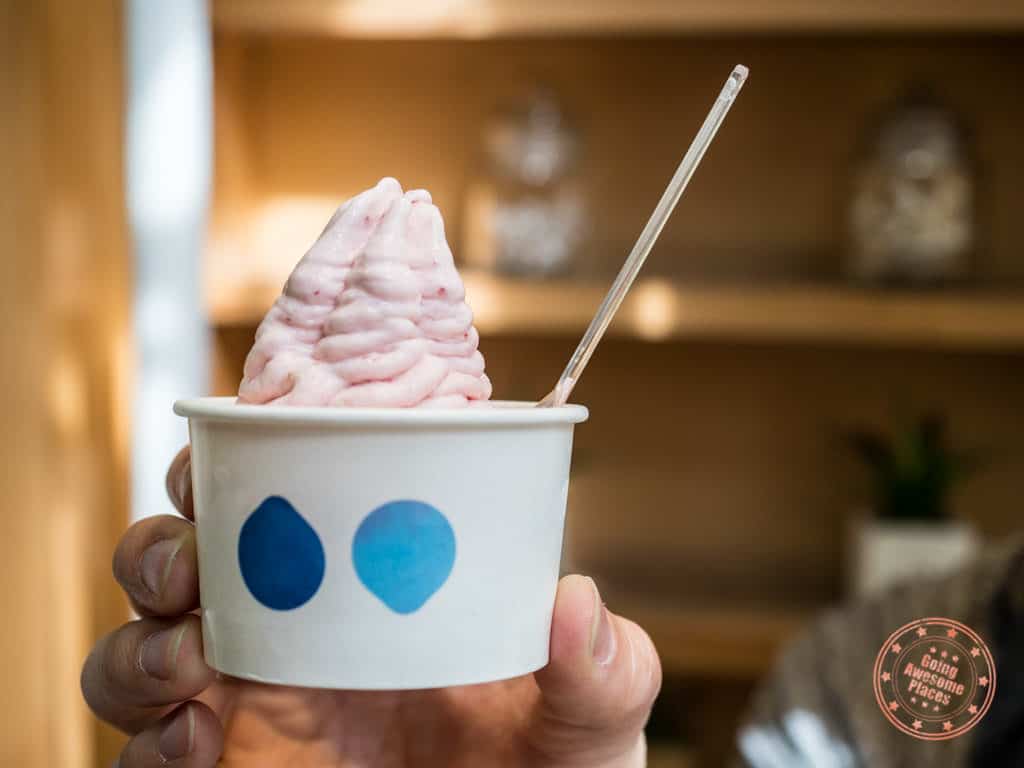
Froyo – not exactly a brand new concept if you’re coming from other parts of the world. It’s something that’s been rather overplayed in North America but in Japan you’ll realize that finding a good one is rather difficult, especially in Tokyo.
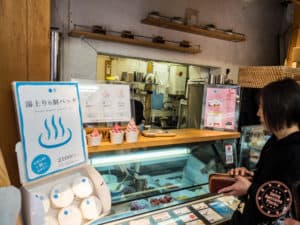
Another secret of Kichijoji is that one of the early pioneers in the country of frozen yogurt actually originated here near Inokashira Park. For over 20 years, they’ve been a steady presence here and is a tiny shop that’s not be missed especially on a hot summer’s day.
Wood Berry’s specializes in blending in their rich and tart homemade yogurt with fresh fruits. It’s bringing back the original concept of frozen yogurt as we found in our New Zealand 3 week itinerary where everything is mixed together as opposed to pre-made flavours with toppings.
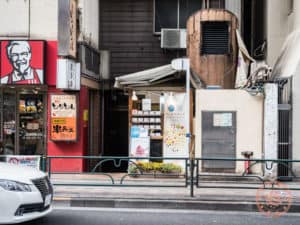
What makes Wood Berry’s frozen yogurt so good is that it has its own unique characteristics of being subtly sour, light, while also creamy as well thanks to their use of mascarpone at the bottom of your cup.

The shop’s recommended mix is to go with the strawberries but honestly I don’t think you can go with any flavour.
WHAT YOU NEED TO KNOW
Address: Japan, 〒180-0003 Tōkyō-to, Musashino, Kichijōji Minamichō, 1-chōme−4−1 井の頭ビル1F
Hours: 12PM – 10PM. Closed Christmas Day.
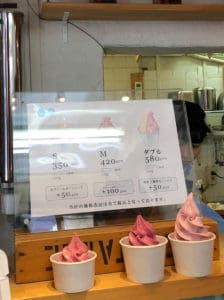
Price: 350-580 JPY each.
Do they accept credit card?: Not sure but I have a feeling that they would.
What to order: Strawberry frozen yogurt.
Tips:
- The prices for the size includes tax.
- There are some ingredients that require an extra charge including strawberry.
- Extra whipped cream is 50 JPY.
- Mixing of two fruits is 50 JPY (only the large size includes two fruits).
- You can turn any of these into a parfait by adding 100 JPY. A parfait is essentially frozen yogurt (raw) with fruits on top.
#7 – Iseya
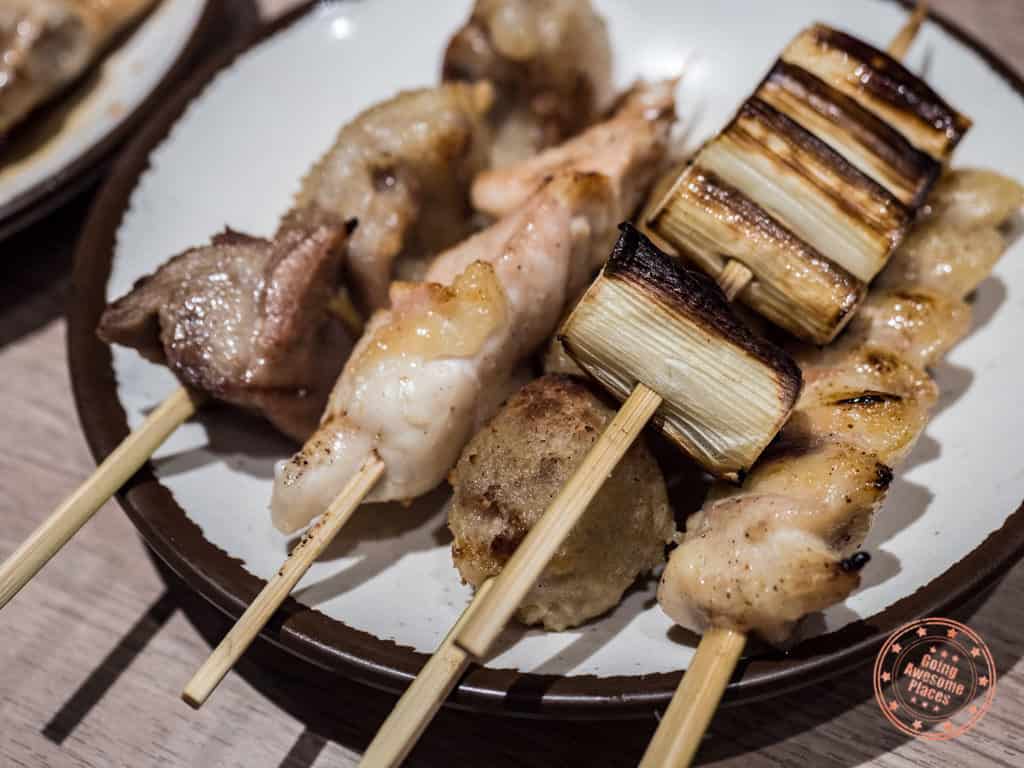
The finale on your Kichijoji food tour is a culinary institution of yakitori. Open since 1928, there’s a lot of history behind the current site. Although it’s been rebuilt to reflect the modern age, the interior has a pleasant blend of design elements from the Showa period while also bringing in contemporary elements as well.

At its core, Iseya is all about its skewers and that part is immediately obvious when you pass by and see the heaving if smoke that billows out from the take out windows. As the meat licks the flames from the charcoal below, the savoury smells fill the street and greet anyone taking the stairs down to the park. Due to it’s location, popularity, you’ll always find a line up here.
While the take-out window is always an option, I still recommend that you queue up to get a seat inside because you’ll want to order lots of food and pair that up with refreshing bubbly golden beer.

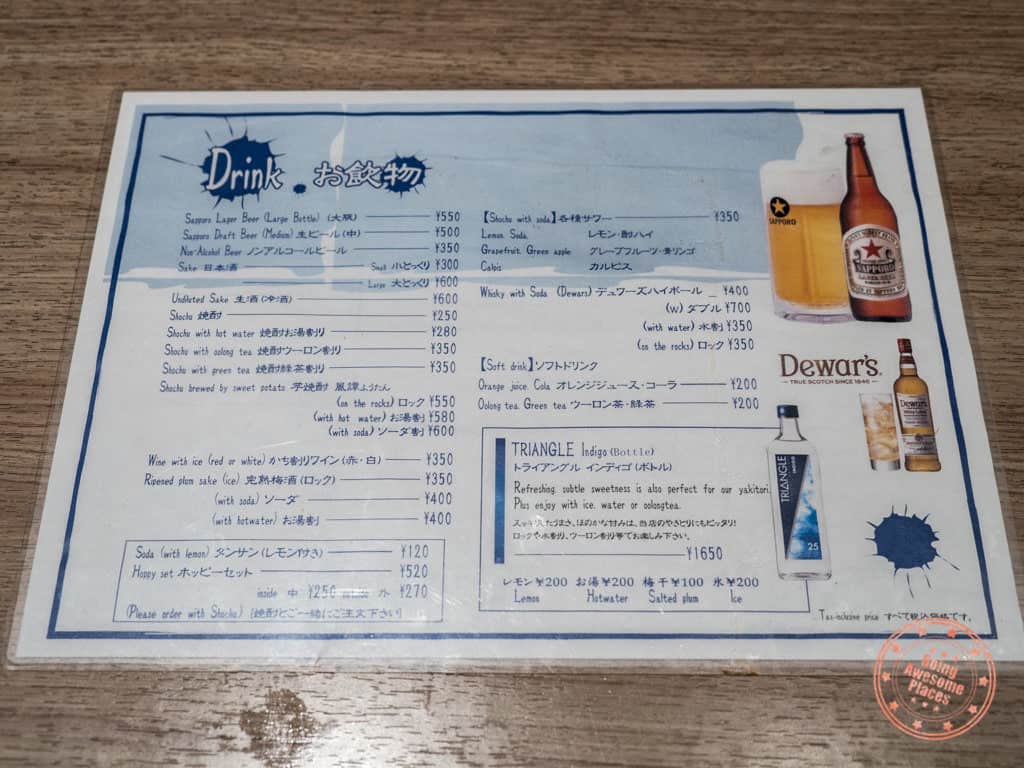
Thankfully, they offer English menus inside. If you’re not feeling too adventurous, I’d recommend the leek, chicken, meatball, chicken tail, and chicken skin skewers. If you’re wanting to try something a little different, pork tongue, and pork temple are good ones to pick that don’t look and taste like what they sound like. Everything else is probably best left to aficionados.

In terms of non-skewer items, I thought the fried chicken (karaage), sashimi tuna, and sashimi octopus were also quite good.
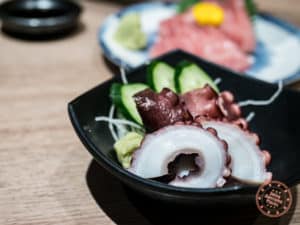
Overall, I thought the yakitori was just OK. I thought Yakitori Ton Ton in Tokyo was miles better but I do admit that the comfortable seating and great selection of food options did make Iseya a great spot for larger groups.
WHAT YOU NEED TO KNOW
Address: 1-chōme-15-8 Kichijōji Minamichō, Musashino, Tōkyō-to 180-0003, Japan
Hours: 12PM – 10PM. Closed on Mondays.
Price: 90-800 JPY each. To give you an idea, for the 5 of us, we spent 7,130 JPY.
Do they accept credit card?: Yes.
What to order: Chicken skin, pork temple, chicken tail, and meatball skewers, fried chicken, and tuna and octopus sashimi.
Tips:
- The full name of the restaurant to search for is “Iseya Koen-ten”.
- There are multiple Iseya locations in Kichijoji so don’t get mixed up with the other ones. Again, look for “Iseya Koen-ten”.
- The grilled corn is soggy and I wouldn’t recommend ordering it.
Bonus – Kurikoan Taiyaki
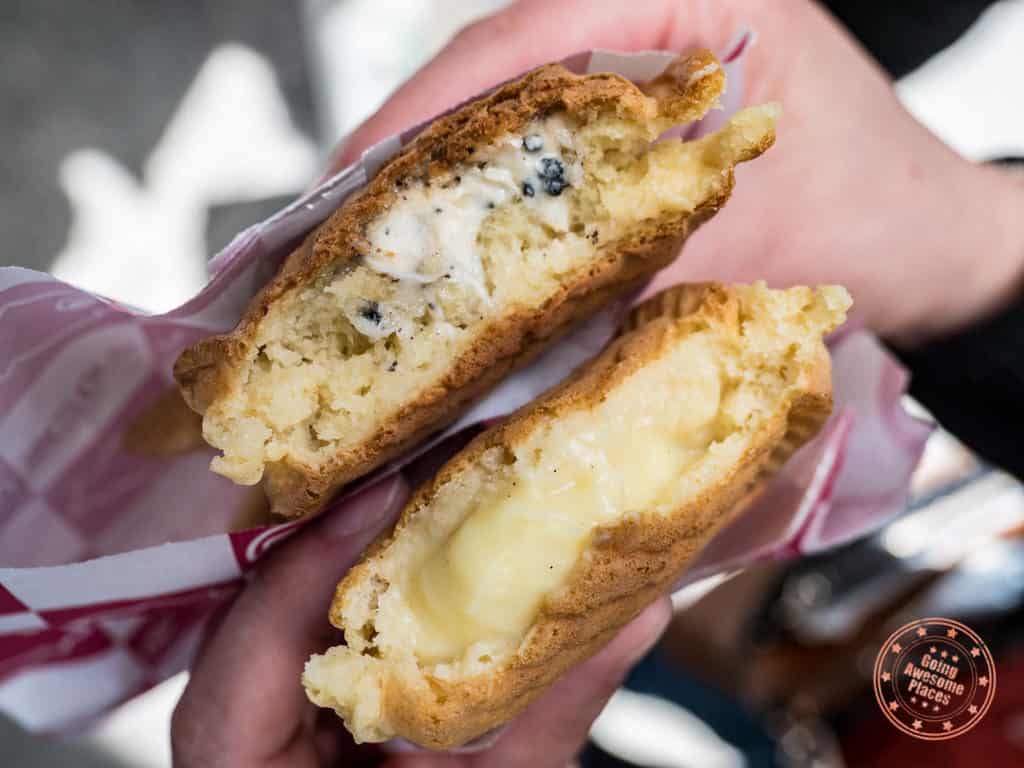
Yes you’ve already had taiyaki on your food tour but if you’re still up for some dessert before you head home, Kurikoan Taiyaki. They’re on the same street as Satou Kichijoji and you might’ve passed by on your way there when you first started. It has a giant fish on the store front – you can’t miss it.

Completely opposite to Amane, this is a chained taiyaki shop that you’ll see all over Tokyo including Kichijoji but what I like about them is that they’re not afraid to try different flavours.
The one flavour that we got to try this time around that I really loved was their cookies and cream. It may be a little sweet for some but I loved it!
WHAT YOU NEED TO KNOW
Address: 1 Chome-1-7 Kichijoji Honcho, Musashino, Tokyo 180-0004, Japan
Hours: 10AM – 9PM.
Price: 130-196 JPY.
Do they accept credit card?: Yes.
What to order: Premium cream, and cookies & cream taiyaki.
What to do in Kichijoji
So what do you do in between all of this eating and snacking while doing your Kichijoji food tour? Here are a few places I recommend that you incorporate into your itinerary as you plan out your day trip.
Inokashira Park

Officially named Inokashira Municipal Onshi Park, most people just call it Inokashira Park. This is a giant green space that anchors the city and is one of the defining features that make it such a great neighbourhood to live in.
With the Inokashira Pond running through it, you’ll find row boats and swan boats out on the water.
The park is often filled with families and visitors alike and is especially popular during the cherry blossom season where people will lay out blue tarp and set up a giant group picnic.
You’ll also find a zoo, outdoor stage, outdoor events on weekends, cafes, temple, Japanese gardens and much more.
Ghibli Museum
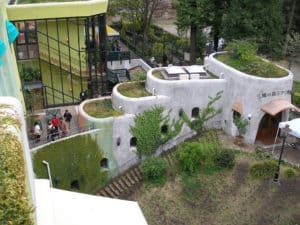
You can’t mention Inokashira Park without mentioning the famous Ghibli Museum.
Located on the south western end of the park and roughly 20-25 minutes walk from the start of the park at Iseya, you’ll find a museum that showcases the work of Japanese animation studio, Studio Ghibli. It’s a combination of a fine arts museum, children’s museum, and technology museum where you’ll learn about how classics such as Spirited Away and My Neighbour Totoro came to life.
The grounds also features a café, bookstore, rooftop garden, and theater.
Since this is a hot attraction close to central Tokyo, it’s mandatory to reserve ahead of time. You can get advanced Ghibli Museum tickets for an afternoon tour. When you book with them, let them know that you want to stay in Kichijoji afterwards for your own self food tour.
Get your Ghibli Museum tickets
The Trendy Street
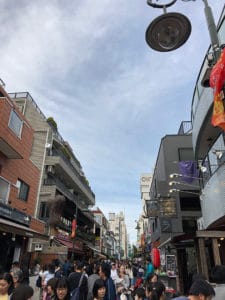
I tried to figure out the name of this street but couldn’t find it so I’ll settle on the “Trendy Street”. This is the street that leads towards Iseya Koen-Ten and Inokashira Park.
This street was extremely unique because it was dotted with antique stores, used clothing stores, sticker stores, European-style cafés, and curio shops that looked like they were out of Thailand. It was a little bizarre but I loved it.
These are the kind of streets that you can spend a lot of time browsing through and find most random of knick-knacks that you didn’t expect to find in Kichijoji of all places.
Harmonica Yokocho

After you finish snacking at Amane, I highly encourage you to walk around the different aisles that make up Harmonica Yokocho. If you’re there during the day, you’ll find a lot of interesting stores to explore including one that sold an interesting mix of USA-branded bag gear, denim, and overall really hip clothing.
While you’re here, it’s a good opportunity to look for souvenirs to bring back home on top of everything you’ll be buying in the Japan souvenir guide.
If you’re here at night, you’ll have a lot of fun at any one of the sake, izakaya bars, or even European-style bars.
Kichijoji Sun Road
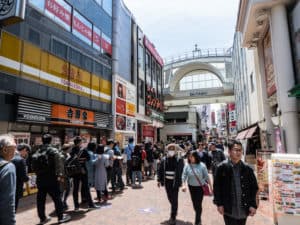
This is the main covered arcade north of the Kichijoji train station and where you’ll be walking through to get to Satou Kichijoji and Tsukuda Suisan. Along this street are plenty of shops and restaurants to check out. I think I even spotted a bunny café here.
How to get to Kichijoji
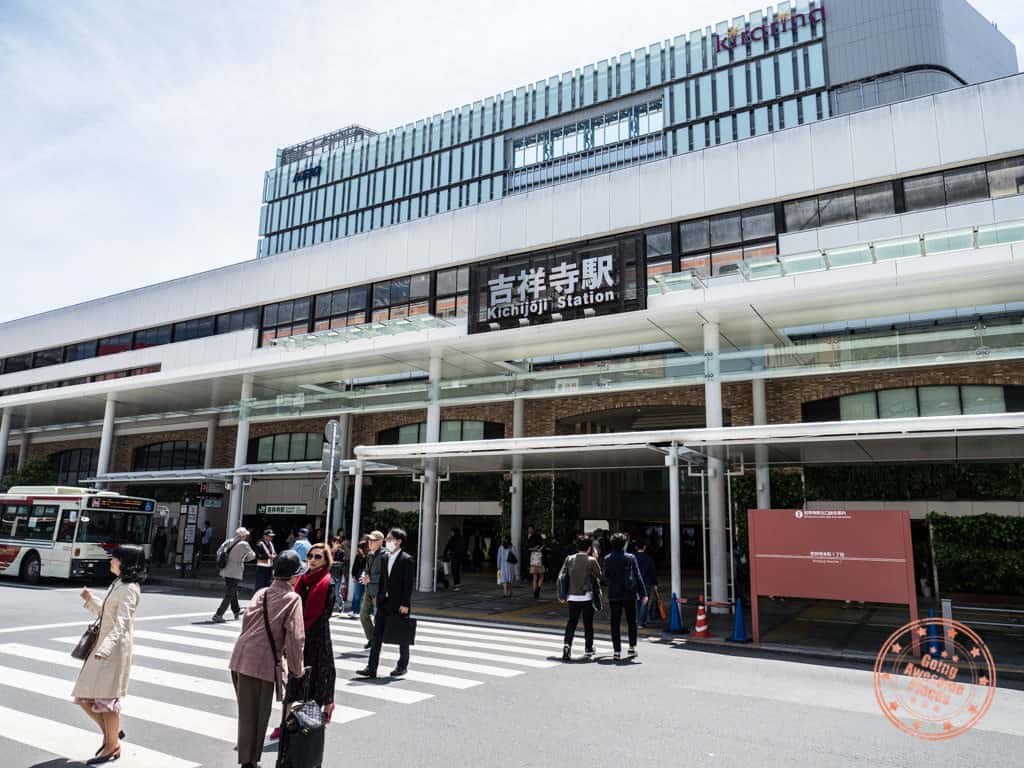
When you look at the map, Kichijoji probably looks like a whole other city but with how large the metropolis of Tokyo actually is, Kichijoji is actually a neighbourhood or a suburb if you will.
Getting to Kichijoji is super simple thanks to the JR Chūō Main Line which runs West to East through Tokyo. This line has major hub connections to Shinjuku, Kanda, and Tokyo Station and is primarily meant to connect Nagoya with Tokyo for those commuting in.
What makes things confusing is that this line has two coloured trains. Yellow are local trains and rapid trains are orange. When it comes to going to Kichijoji, either line will work especially if you’re hopping on in Shinjuku. However, if you’re trying to get on or off at Tokyo Station, the Chuo line and Sobu line goes there but Chuo-Sobu does not. You’ll also need to change trains at Ochanomizu Station or Kinshicho Station to get to Tokyo Station.
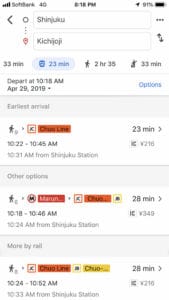
Recommendation: I know that sounds confusing and trust me, once you’re in one of these giant hub stations, you’ll feel quite overwhelmed. My recommendation? Fire up Google Maps on your phone and just let it tell you which train is going to get you to Kichijoji the fastest, what train to take, and what platform to go to.
What about the JR Pass?
With the JR pass, your commuting from Tokyo to Kichijoji and back via the Chuo Main Line is covered and free.
Grab your JR pass
The journey shouldn’t take any longer than 25 minutes from Shinjuku. Grab a seat and enjoy the ride!
Where to stay in Kichijoji
If you’re thinking about making the most of your time in Kichijoji, you can definitely look at staying here overnight. The Japan travel guide has numerous recommendations but here I’ve isolated it down to accommodations in or near Kichijoji itself.
SOLID PICK

Just one minute walk from the JR station, this is a modern hotel that is well furnished although rooms are quite compact. There is free wifi in the property. Parking is available and luggage storage can be found at the reception desk.
MOST POPULAR

Comfortable accommodations located just north of the Kichijoji station. The rooms are compact but well-furnished and relatively large for Japan. There is free wifi and excellent buffet available for an extra price.
Have you heard about Kichijoji before reading this? If you’ve been, what were your favourites from this food tour? Drop your thoughts in the comments down below!
What you should read next
